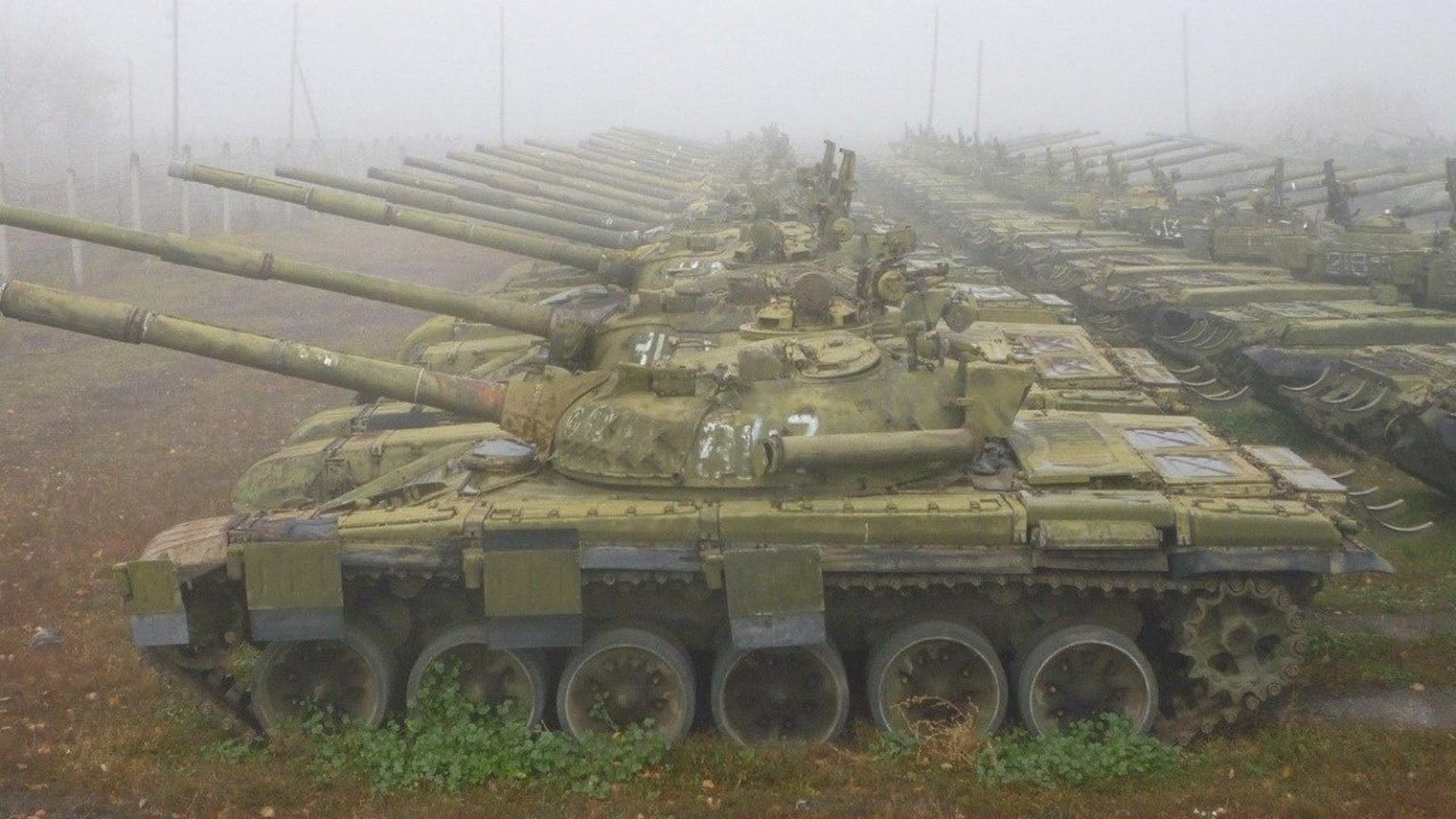The Russian force in Ukraine loses nearly 100 tanks a month, according to analysts who scrutinize social media to identify destroyed vehicles. At the same time, Russian industry builds no more than 50 new tanks a month.
To make up the gap, as best as they can, the Russians drag old Cold War tanks out of long-term storage, refurbish them, upgrade them in some cases and then ship them off to the front alongside the newly built tanks. (Stored tanks are visible in commercial satellite imagery, making it fairly straightforward to count them.)
The recovered tanks include T-55s from the 1950s, T-62s from the 1960s and a variety of T-72 and T-80s from more recent decades. Weirdly, they mostly don’t include the very oldest T-72s—the original T-72 Ural and T-72A models from the early 1970s. The ones with thinner armor and cruder fire-controls.
Twenty-eight months into Russia’s wider war on Ukraine, stocks of T-55s are down 31 percent, T-62s are down 37 percent and T-80Bs are down a startling 79 percent. But just nine percent of T-72s have left storage. The Russians “haven’t removed T-72A/Ural tanks in bigger numbers,” analyst @Highmarsed noted.
To be clear, even a tank that is completely rusted over is recoverable—if you strip and sand down the hull and replace almost every component that isn’t a solid piece of steel. “With enough money, time and spare parts it is probably possible to refurbish any tank,” @Highmarsed explained.
But that kind of deep restoration is extremely time-consuming and costly. If an old tank is really far gone—and to be clear, the roughly 1,000 T-72 Urals and T-72As that remain in storage could be “in bad shape,” according to @Highmarsed—it’s probably better to put the money toward a brand-new tank.
Why would the Kremlin spend money restoring 70-year-old T-55s and 60-year-old T-62s but not 50-year-old T-72s? The answer, most likely, is that the T-55s and T-62s have human loaders in their four-person crews; the T-72s have automatic loaders replacing the fourth crewman.
Autoloaders are intricate and can be hard to maintain, which is why the U.S. Army and many other NATO armies never used them in their own tanks. In a 1982 assessment, the U.S. Central Intelligence Agency praised the T-72’s autoloader for its speed but noted its complexity.
Sure, a T-55 is 20 years older than a T-72 Ural, but it’s a much less complicated tank—and certainly easier to refurbish.
So there’s a weird neglected middle in Russia’s stocks of old tanks. Newer complex tanks are worth restoring—and so are very old simple tanks. But old complex tanks—T-72 Urals and T-72As—seemingly aren’t worth the time and money it would tank to bring them back to working condition.
According to analyst Richard Vereker, the oldest T-72s account for 10 percent of Russian T-72 losses. That’s to be expected, considering how few of the aged tanks are in front-line use.
But that still translates into several destroyed T-72 Urals and T-72As every month, out of just 100 the Russians have pulled out of storage. At that rate, the old tanks could be extirpated pretty soon.
The rest of the first-generation T-72s may never leave the vast vehicle parks where they’ve been slowly corroding for decades. The Russians would have to get pretty desperate to look at the 46-ton pile of rust that used to be a functional T-72 Ural and see something worth spending time and money on.
They may actually get that desperate, however. “I don’t think there will be any specific point where Russia will run out of tanks,” @Highmarsed wrote, “but their tank fleet will likely be slowly but continuously shrinking over time, which will have an effect on their offensive capabilities.”
As their combat power gradually erodes for a want of tanks, the Russians may eventually decide old and complex tanks are worth restoring alongside older, simpler tanks and newer, more complex ones.
Sources:
1. Oryx: https://www.oryxspioenkop.com/2022/02/attack-on-europe-documenting-equipment.html
2. @Highmarsed: https://x.com/HighMarsed/status/1809641392232075743
3. Central Intelligence Agency: https://www.cia.gov/readingroom/docs/DOC_0000498195.pdf
4. Richard Vereker: https://x.com/verekerrichard1/status/1790461001202012642
Read the full article here





